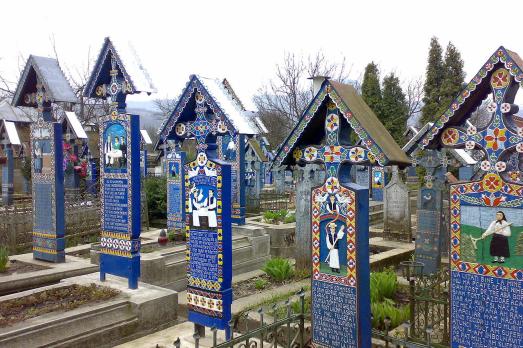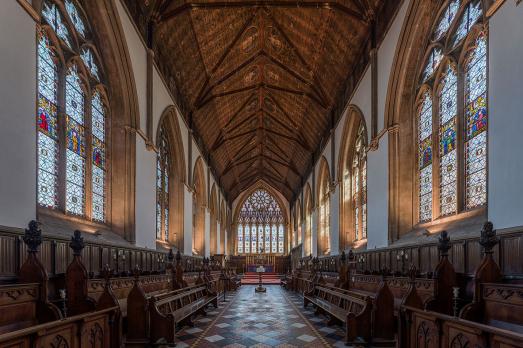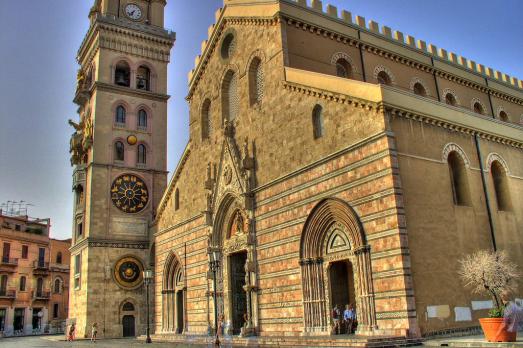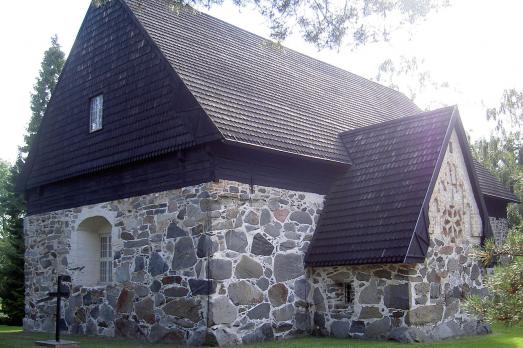
Merry Cemetery
Săpânţa, RO
The Merry Cemetery is a cemetery in the north of Romania famous for its colourful hand-painted wooden crosses, each with a painting and a poem in memory of the person buried below.
Here you can search for a building to visit. You can use the map find destinations, or you can use the filters to search for a building based upon what different criteria.

Săpânţa, RO
The Merry Cemetery is a cemetery in the north of Romania famous for its colourful hand-painted wooden crosses, each with a painting and a poem in memory of the person buried below.

Oxford, GB
Merton College Chapel, dedicated to St Mary and St John the Baptist, was completed in the late 13th century. The present choir, with its huge east window, was completed in 1294. Under Elizabeth I, Protestantism was imposed and Merton College found itself under siege for three weeks by the Archbishop of Canterbury, Matthew Parker, in defence of the old religion. The chapel replaced St. John's Parish Church and continued to serve as a parish church as well as a chapel until 1891.

Meșendorf, RO
The early Gothic hall church built in the 14th century with western tower and polygonal chancel was prepared for defence in 1495. The tower was fortified with a wooden defence level, as well as the nave and the chancel. While the vaults of the church were removed because of the risk to collapse during the renovation work in the early 19th century, the tower has been preserved in its medieval form. The fortification wall was protected with three defence towers, of which two are still preserved and an outer bailey was built in the 16th century in the south-western part. A part of this wall was demolished in 1888, allowing a school to be built in that space. The three sides wooden gallery, decorated with Baroque paintings and the winged altar from 1693 above which the 1914 organ is installed, dominates the interior.
Midsland, NL
This church is listed as a National Monument of the Netherlands.

Ringsaker, NO
Mesnali church was built according to drawings by architect Ingeborg Krafft in 1933. The church is clearly inspired by cruciform churches in Gudbrandsdal.

Messina, IT
The Cathedral of Messina was consecrated on 22 September 1197 in the presence of Emperor Henry VI (1191-1197) and his wife Constance, daughter of the Norman king Roger II of Sicily. In the course of history, it has been destroyed and rebuilt several times so that practically nothing remains of the original structure of the building. In each of the earthquakes of 1783 and 1908, the entire interior furnishings were also destroyed by the collapse of the walls. After the 1783 earthquake, the bell tower was removed and two neo-Gothic towers were added to the two side apses next to the choir. After the earthquake of 1908, the cathedral was rebuilt in its medieval state from 1919 to 1923. In 1933, a free-standing bell tower was erected next to the cathedral. On the night of 13 June 1943, Messina was bombed and the cathedral was completely burnt down. The independent bell tower, however, was spared. The cathedral was consecrated again in August 1947.

Tampere, FI
Messukylä Old Church is a medieval grey stone church, the oldest building in Tampere. A wooden church stood on this site as early as the 15th century. The present stone church was built in place of the wooden church, judging by the style of the masonry and windows, between 1510 and 1530. The church has preserved five wooden sculptures from the years 1430 and 1440, of which the image of the Virgin Mary has been transferred to the National Museum. The other four are still visible in the church.

Appingedam, NL
This is a simple, small building that was put on the Jewish cemetery in 1930 as the successor of the first 'lykenhuisje' from 1900.

Pano Lefkara, CY
The building is located outside of the village in south-western direction (approx. 0,5 km) on the top of a hill overlooking the village.

, CY
Metamorfosis tou Sotiro (Transfiguration of the Saviour) is one of the painted churches of the Troodos Mountains. It has been a UNESCO World Heritage Site since 2001.

new
The Chassidic Route is a cultural and historical trail tracing the rich legacy of Jewish communities in southeastern Poland and western Ukraine. This region was central to the rise of Chassidism in the 18th century. Here, we highlight 10 remarkable synagogues you’ll discover along this route.

he cradle of the Industrial Revolution in Germany, Chemnitz, is well-known for its industrial heritage landscape, but the city is also home to remarkable examples of religious architecture from different historical periods. Join us as we explore the key landmarks of this European Capital of Culture 2025.

The twin towns of Nova Gorica (Slovenia) and Gorizia (Italy), lying on the border between the two countries, have a rich religious heritage, steeped in centuries of tradition. If you are looking for ideas for your visit, take note of these 10 religious sites that you should not miss.